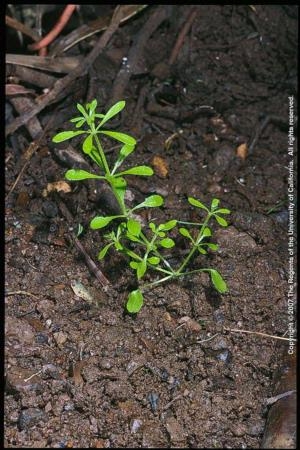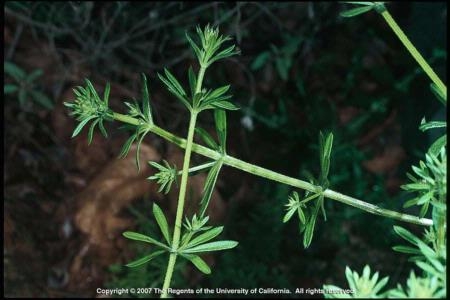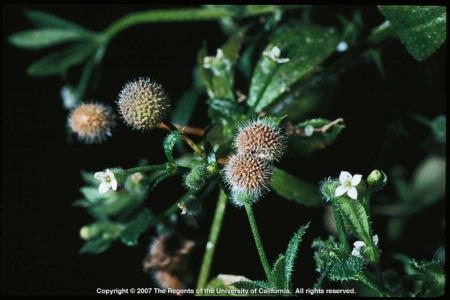While the catchweed bedstraw Galium aparine has historically provided some positive benefits, overall this plant is unwelcome. A native of North America this weed can be found throughout California, particularly in moist, shady areas causing problems in agricultural production, landscapes and vegetable gardens.
Stems of this mature plant can reach up to six feet long. A winter or summer annual in our state, peak germination typically occurs in mid to late December, with a secondary germination in February or March. Plants typically produce 100 to 400 seeds a piece. These seeds can remain viable in the soil for up to three years.
In addition to competing for nutrients, water and light catchweed bedstraw can host several nematode, insect and disease pests. Other problems associated with this weed include entanglement in farm equipment, and contamination and subsequent reduction in the value of wool or fur of livestock animals.
For advice in managing this weed, home gardeners and landscape professionals can download UC ANR’s recently updated Catchweed Bedstraw for Home publication.
Commercial growers can find advice in combating this weed at the UC IPM Pest Management Guideline website.

Catchweed bedstraw seedling.
Photo by Joseph DiTomaso

Catchweed bedstraw stem.
Photo by Joseph DiTomaso

Catchweed bedstraw flowers and fruit.
Photo by Joseph DiTomaso